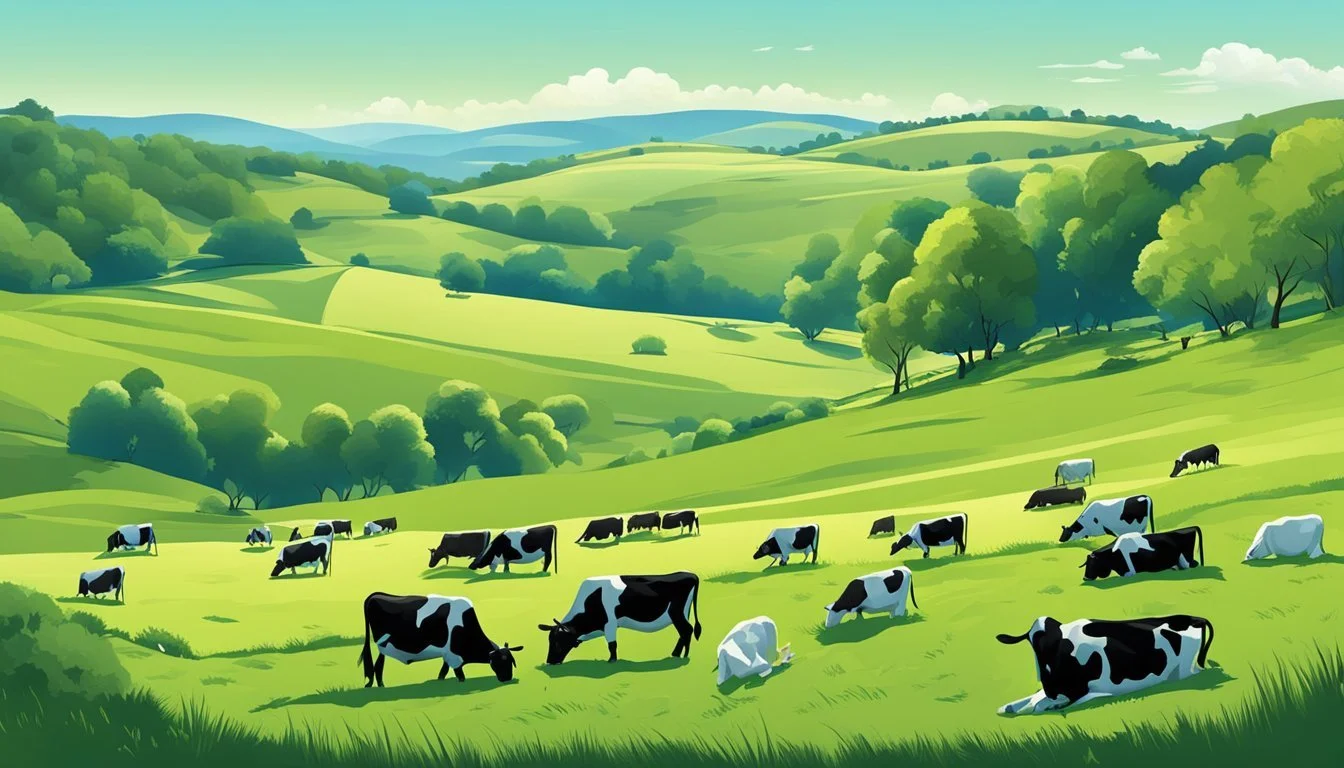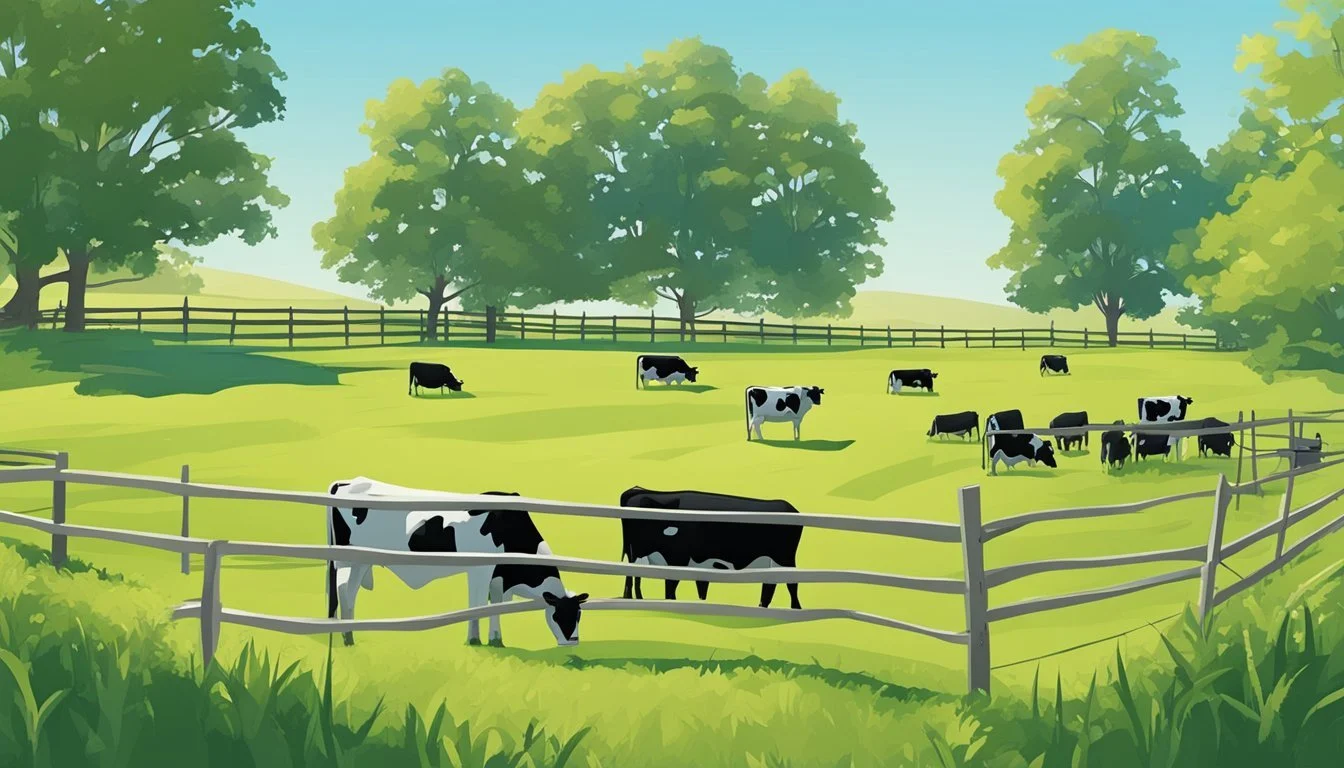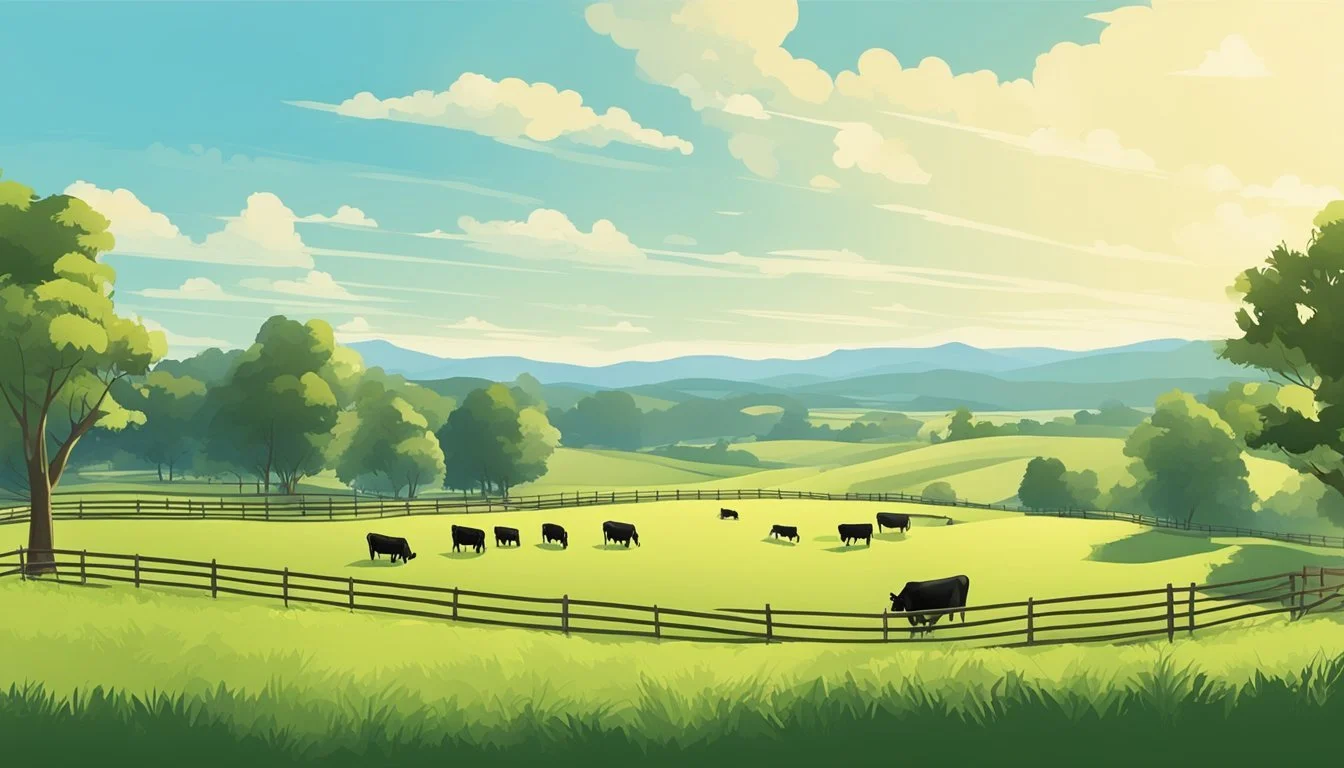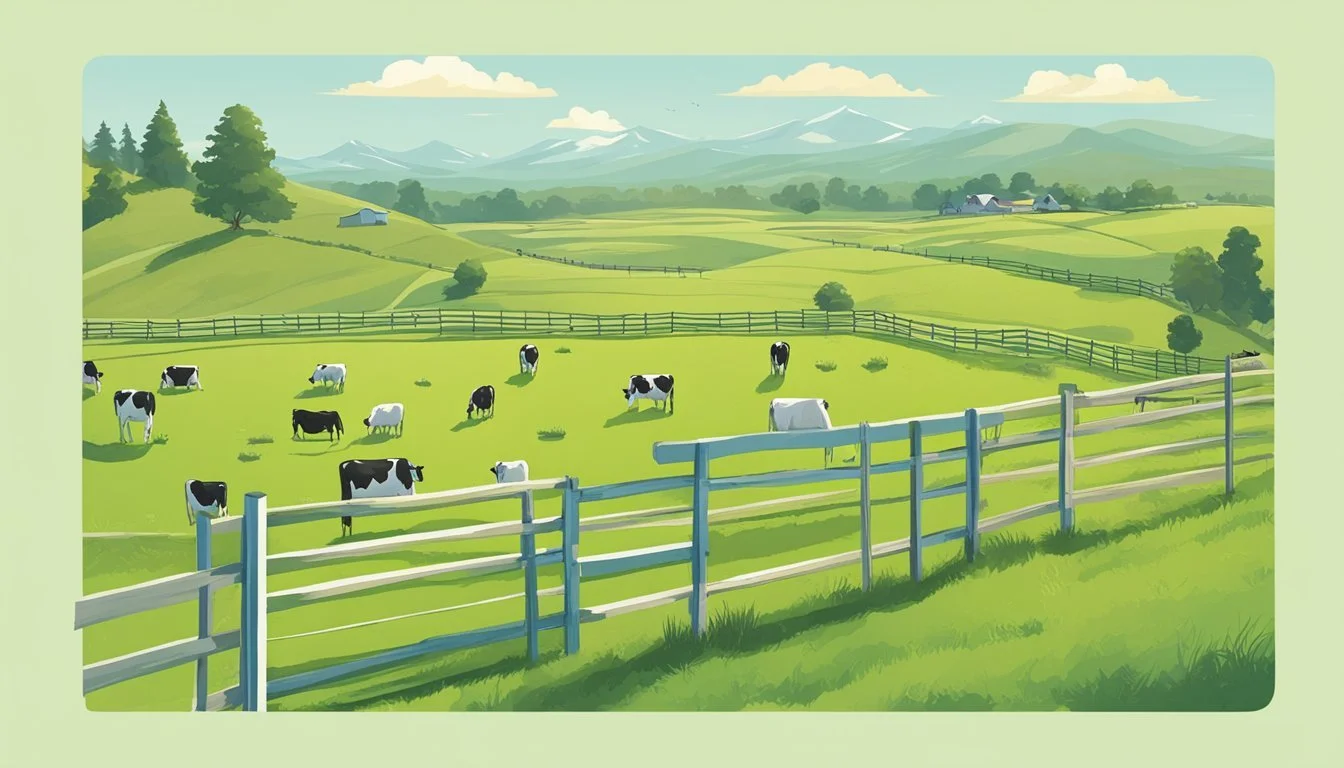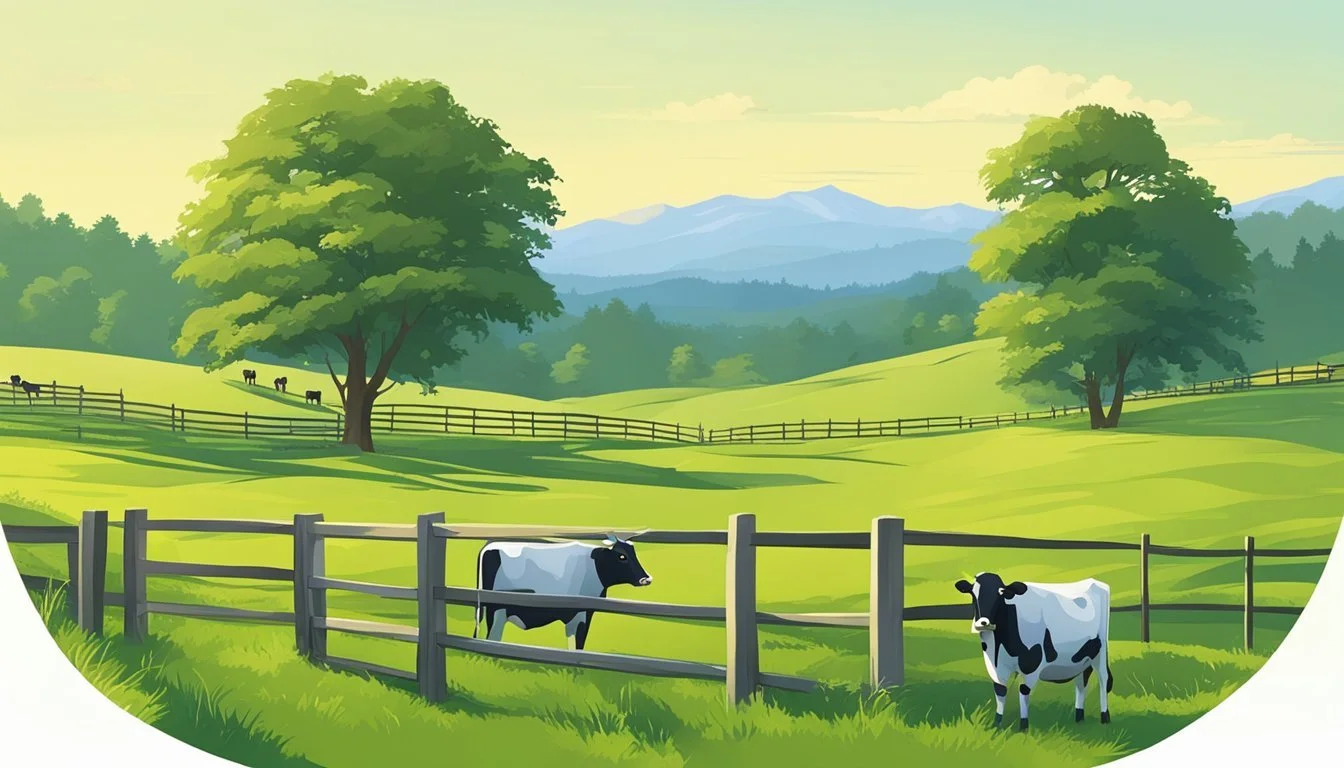Stocking Rate Minnesota
Determining Optimal Cows Per Acre on Your Land
Stocking rate, a crucial metric for any livestock operation, dictates the number of animals that can be sustainably supported per acre on a pasture. In Minnesota, a state characterized by its variable climate and diverse forage production, understanding and calculating accurate stocking rates is essential for maintaining pasture health and ensuring animal welfare. This balance hinges on several factors, including forage availability, land productivity, and the nutritional needs of the cows.
Determining the appropriate number of cows per acre requires an assessment of the land's carrying capacity, taking into account Minnesota's seasonal forage growth patterns. Landowners must consider the size and weight of their cows, often measured in Animal Units (AUs), and the forage demand that these animals represent throughout the grazing season. Available forage, expressed as pounds per acre, must align with the herd's requirements to avoid overgrazing and to ensure a steady food supply.
In Minnesota, where pastureland can differ significantly in composition, ranchers must adapt their stocking rates to local conditions. This may mean altering livestock densities according to forage production or incorporating adaptive management practices to respond to environmental changes. Precise stocking rates support the longevity of the pasture ecosystem and contribute to the overall success and sustainability of the livestock operation.
Understanding Stocking Rates
Stocking rate is a critical component in grazing management, affecting both the health of the cattle and the land they graze on.
Definition of Stocking Rate
Stocking rate refers to the number of animal units (AUs) grazing a specific land area for a set period. An AU represents a standardized measurement, often based on a 1,000-pound cow. In Minnesota, stocking rates are crucial to determine how many cows per acre a property can support without leading to problems such as overgrazing or soil degradation.
Importance of Proper Stocking
Proper stocking directly influences the sustainability of pasture resources, economics of livestock operations, and ecological outcomes such as biodiversity. Effective management ensures a balance between forage production and grazing pressure, thereby maintaining an optimal carrying capacity. Inadequate stocking can result in underutilized resources, while excessive stocking may cause overgrazing, poor animal performance, and environmental degradation.
Factors Affecting Stocking Rate
The stocking rate in Minnesota hinges on a precise evaluation of land and forage characteristics, and climatic variables. These factors are pivotal for determining how many cows an acre can sustainably support.
Land and Forage Characteristics
Acreage and Pasture Conditions: In Minnesota, the nature of land varies, affecting the stocking rate. Optimal forage demand is met when pasture conditions and forage types are matched with the herd's requirements. Here, the focus is on quantity and quality of available forage:
Grasses and Forage Type: Pastures rich in high-quality grasses like orchardgrass or timothy can support more cows per acre. Forage type determines the palatability and nutritional value, which in turn impacts how much forage a cow will consume.
Forage Production: This entails both the growth rate of pastures and total biomass. Forage production is often measured in pounds per acre and varies by forage type and pasture health.
Available Forage: It denotes the amount of forage present on an acre throughout the grazing season that can be consumed by livestock without degrading the land.
Climatic Considerations
Precipitation and Drought:
Annual Precipitation: Minnesota's climate influences forage growth with its variable annual precipitation. This affects both the quality and quantity of grasses, and as a result, the number of cows that an acre can support.
Drought: The frequency and severity of drought conditions drastically reduce forage availability and quality, which can lower the recommended stocking rate to prevent overgrazing and land degradation.
Climate patterns are integral for grazing season length and timing, both of which are critical to determining the suitable stocking rate for any given property.
Calculating Stocking Rate for Minnesota
In Minnesota, calculating the appropriate stocking rate is critical for balanced grazing management. It involves assessing the forage available and understanding the specific consumption needs of cattle.
Determining Animal Unit Months
An Animal Unit Month (AUM) represents the amount of forage a 1,000-pound cow with a calf will consume in one month. To determine AUMs, one must first assess the forage yield of their property. This involves measuring the weight of the forage available for consumption. The total available forage in pounds is divided by the average forage consumption per cow per month (approximately 800-1,000 pounds), equating to the AUMs available on the property.
Applying the Grazing Stick
The grazing stick is a tool used to measure forage yield in pastures. It helps farmers determine the amount of forage that is available for grazing. To use it effectively, one places the stick vertically in representative areas of the pasture, records the height of the grass, and refers to the calibrated measurements to estimate available forage in pounds per acre.
Grazing Management Techniques
Successful grazing management in Minnesota can include rotational or continuous grazing and multi-species grazing. Rotational grazing involves dividing pastures into smaller areas and moving livestock between them to allow forage to recover. Continuous grazing allows animals to graze the same pasture throughout the season. Multi-species grazing uses different types of animals to graze the same area, taking advantage of the varied forage preferences and impacts on the land.
In proper grazing management, one determines the stocking rate — the number of animals on a given area for a specific time — by balancing animal demand with forage supply, which optimizes animal performance and maintains forage health.
Maximizing Pasture Utilization
Effective pasture management in Minnesota ensures a livestock operation maintains a sustainable stocking rate while optimizing forage production. This involves adjusting grazing patterns and improving forage quality for maximum utilization of available acres.
Optimizing Grazing Patterns
In Minnesota, a livestock operation can be enhanced by implementing rotational grazing. This involves dividing pastures into smaller paddocks to control the grazing patterns of the cattle. Using this technique, cattle graze in one paddock while forage in others regenerates. Rotational grazing can increase the utilization rate and extend grazing days. For instance, a system with eight paddocks may allow for a grazing rotation that provides adequate recovery time for forage without overutilization of any single area.
Grazing Time: Limiting the time cattle spend in each paddock to prevent overgrazing.
Rest Periods: Ensuring paddocks have adequaterest periods to recover before being grazed again.
Stocking Density: Adjusting the head of cattle per paddock according to forage availability.
Improving Forage Quality
Enhancing forage quality is essential for a productive livestock operation. It involves both selection of the right forage species and effective management practices to maintain high-quality pasture. In Minnesota, cool-season grasses and legumes generally dominate pastures and can provide excellent forage if managed correctly. Strategies to improve forage quality include:
Soil Fertility: Periodic soil testing and application of fertilizers based on soil nutrient deficiencies.
Forage Species: Planting a diverse mix of forage species to extend the grazing season and ensure balanced nutrition.
Prescribed Fire: Using prescribed fire to manage invasive species can improve forage quality and quantity for the native species that cattle prefer.
Considering these strategies can result in an operation that supports a higher stocking rate by making better use of the land to support the nutritional needs of the head of cattle.
Livestock Considerations
In Minnesota, successful livestock production hinges on effective management and precise calculations tailored to the local environment. The breed of cattle and the specific needs of cow/calf pairs are critical factors for determining appropriate stocking rates.
Impact of Breed on Stocking Rate
Different breeds have varying forage demands, resulting in different stocking rates. For instance, a breed that typically has a larger body size will consume more forage and thus may require more acreage per head to sustainably graze without depleting resources. Efficient pasture management must consider the cattle type present, with further distinctions made between beef and dairy cattle due to their different nutritional requirements. Producers should account for these variations to maintain a balance between livestock production and forage availability.
Calculating Cow/Calf Pair Requirements
When calculating stocking rates, one must consider the cow/calf pair as a singular unit with specific forage needs. To maintain productive livestock on their property, producers use the following calculation:
Total Land Area (in acres) ÷ [(Number of Cow/Calf Pairs) x (Grazing Season in months)]
For instance, with 50 cow/calf pairs grazing over 12 months:
200 acres ÷ [(50 Cow/Calf Pairs) x (12 months)] = 0.33 acres per Cow/Calf Pair per month
This calculation provides a monthly overview of land usage per cow/calf pair, and adjustments can be made for more or less intensive management strategies. Proper calculations ensure that the forage demand of the livestock aligns with the carrying capacity of the land.
Economic and Environmental Sustainability
When managing cattle on Minnesota pastureland, finding a balance between economic gains and environmental preservation is crucial. Correctly adjusted stocking rates are pivotal to achieving long-term profitability and maintaining ecological integrity.
Assessing Profitability of Stocking Rates
To ensure economic sustainability, farmers must calculate the optimal stocking rate—the number of cows per acre their land can support without depleting resources. This calculation is influenced by forage production, which can vary based on soil quality and climate. For example, data indicates that an acre of Minnesota pasture might sustainably support around 1.4 animal units (AU) for a grazing season, taking into account necessary resting periods for pasture recovery.
Biodiversity also affects the profitability of stocking rates. Diverse pastures often yield higher forage quality and quantity, improving cattle health and growth which, in turn, boosts economic returns.
Preventing Desertification and Degradation
The impact of overgrazing on pasture health is directly linked to soil degradation and the risk of desertification in dry areas. To prevent such outcomes, proper management strategies must be employed:
Rotational Grazing: Implementing a rotational grazing system can prevent overgrazing by allowing grasslands time to regenerate, thus preserving soil quality and preventing desertification.
Stocking Density Adjustments: Continuous monitoring of pasture health allows for timely adjustments to stocking densities, ensuring that overgrazing does not occur.
Soil Conservation Measures: These might include maintaining ground cover and controlling invasive species to enhance soil stability and fertility, fostering a healthy ecosystem that supports both cattle production and biodiversity.
Through careful analysis and responsible management, farmers can maintain profitable stocking rates while guarding against environmental degradation.
Best Practices and Recommendations
When managing livestock in Minnesota, several best practices should be employed to ensure a sustainable stocking rate that supports both animal health and pasture productivity.
Stocking Rates A general guideline is one cow per one to two acres; however, the optimal stocking rate varies depending on pasture quality, forage type, and management goals. Always assess your property's forage resources and consider seasonal variations.
Rotational Grazing Rotational grazing is highly encouraged. By dividing pastures into smaller areas and rotating cattle through, forage regrowth is promoted, and overgrazing is minimized. This technique optimizes pasture utilization and can enhance cattle weight gain and milk production.
Calculating Cows per Acre To ascertain how many cows your acreage can support, utilize the Animal Unit concept, where a 1000-pound cow is 1 AU. Adjust for cow size accordingly.
Key Considerations
Forage Quality: Higher quality forage can support higher stocking rates.
Water Access: Ensure ample and accessible water sources for cattle.
Shelter: Provision of windbreaks and shelters for adverse weather conditions.
Land Health: Monitor pasture conditions regularly to prevent overuse which can lead to erosion and decreased productivity.
It's imperative to adjust stocking rates based on regular observations and pasture conditions rather than solely on rigid calculations, as this will facilitate a more productive and sustainable cattle management system in Minnesota.

